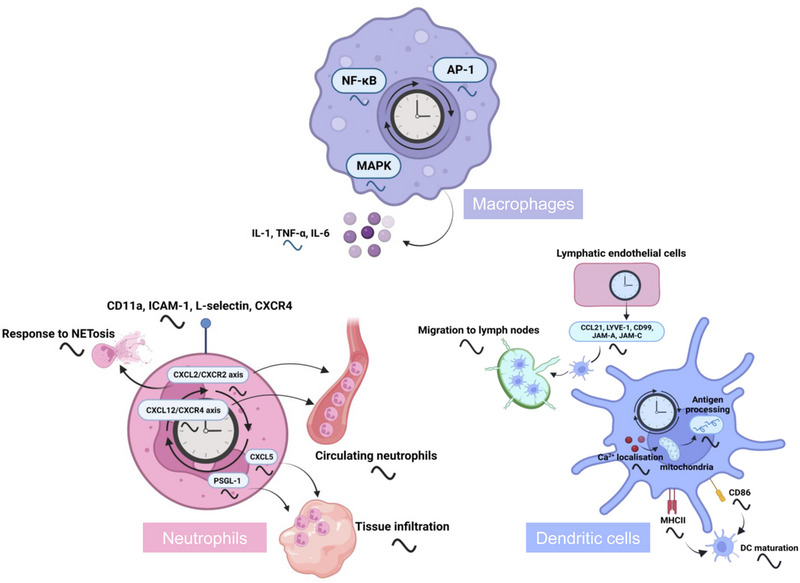FIGURE 3.

Regulation of myeloid cell behaviors and functions by the circadian clock. The circadian clock orchestrates the rhythmic patterns in various aspects of myeloid cell activities, encompassing their circulation, recruitment to lymph nodes, tissue infiltration, maturation, as well as the synthesis and release of cytokines, antigen processing, and subsequent immune responses. Circadian rhythms are orchestrated via distinct pathways, notably the CXCL2/CXCR2 and CXCL12/CXCR4 axes, and are subject to modulation by regulators such as CXCL5, PSGL‐1, CD86, and MHCII. Furthermore, a variety of regulatory elements, including NF‐κB, AP1, and MAPK, are instrumental in the precise modulation of myeloid cell behaviors and functions.Notably, DCs are categorized into two developmental lineages: a myeloid lineage, shared with phagocytes, and a lymphoid lineage, shared with T cells. AP‐1, activator protein‐1; CCL, CC chemokine ligand; DC, dendritic cell; ICAM‐1, intercellular adhesion molecule‐1; JAM, junctional adhesion molecule; LYVE‐1, lymphatic vessel endothelial hyaluronan receptor 1; MAPK, mitogen‐activated protein kinase; MHC, major histocompatibility complex; PSGL‐1, P‐selectin glycoprotein ligand‐1.
